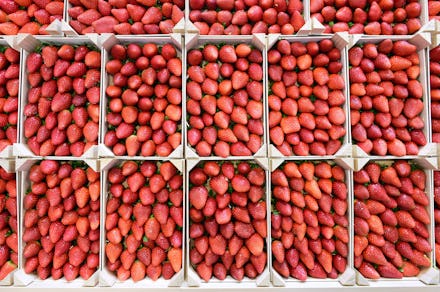Why do these dang strawberries look red even though there are no red pixels in the photo?

Take a look at these strawberries. What color do they appear to be to you?
Red, right?
But there's a twist: There are, in fact, no red pixels in the photo, according to experimental psychologist Akiyoshi Kitaoka, who created the image. And yet the dang strawberries look red to us anyway.
So what's the deal?
It turns out, this is a great illustration of color constancy: the brain's ability to perceive an object's color the same way despite changes in light. It's why we see an orange as orange in both the light and the dark, and it's one of the reasons we spent hours and hours arguing whether that awful dress was gold and white or blue and black.
Color constancy is a helpful phenomenon that allows us to use color as a "biological signaling mechanism" — telling us, for example, whether those strawberries we're about to eat look healthy and ripe, regardless of the light we're in.
The brain works in mysterious ways.